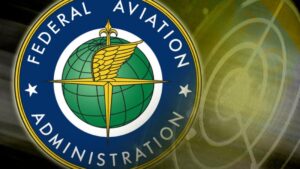 The Federal Aviation Administration (FAA) has formally replaced the term “Unidentified Flying Object” (UFO) with “Unidentified Anomalous Phenomena” (UAP) in its core air traffic control manual, marking a notable procedural update that aligns with recent federal terminology and U.S. code. The change was highlighted by Americans for Safe Aerospace (ASA) and its founder, former Navy pilot Ryan Graves, who praised the revision as a step toward transparency and improved aviation safety reporting.
The Federal Aviation Administration (FAA) has formally replaced the term “Unidentified Flying Object” (UFO) with “Unidentified Anomalous Phenomena” (UAP) in its core air traffic control manual, marking a notable procedural update that aligns with recent federal terminology and U.S. code. The change was highlighted by Americans for Safe Aerospace (ASA) and its founder, former Navy pilot Ryan Graves, who praised the revision as a step toward transparency and improved aviation safety reporting.
The update was issued under FAA Notice N 7110.800, effective October 26, 2025, and applies to all Air Traffic Organization (ATO) personnel. The notice modifies two key sections of FAA Order JO 7110.65, the governing document for air traffic control procedures. Specifically, it updates paragraph 1-2-6, “Abbreviations,” and paragraph 9-8-1, “General,” to remove the word UFO and introduce UAP in its place.
(Editor’s Note: As of publication, the FAA’s online version of Order JO 7110.65 does not yet reflect the revisions outlined in Notice N 7110.800. The updated language appears only in the notice itself, pending formal incorporation into the manual.)
FAA’s Revised Directive
The updated manual instructs that controllers must now:
“Inform the operations supervisor/CIC of any reported or observed unidentified anomalous phenomena (UAP)/unexplained phenomena activity.”
The section also references FAA Order JO 7210.3, paragraph 4-7-4, which addresses formal reporting channels for such incidents. The change, while procedural, reflects a broader institutional recognition of UAPs as a legitimate aviation safety and national security concern.
The FAA explained the reasoning behind the update in the “Background” section of the notice:
“On December 22, 2022, Title 50 United States Code (50 U.S.C.) section 3373, Establishment of All-Domain Anomaly Resolution Office, created and defined the term unidentified anomalous phenomena (UAP) which effectively, for governmental purposes, replaced the term unidentified flying object (UFO).”
“As a result, the FAA will require air traffic control (ATC) to notify the National Tactical Security Operations (NTSO) Air Traffic Security Coordinator (ATSC) team on the Domestic Events Network (DEN) of any pilot reports or air traffic personnel observations of UAP activity.”
A Quiet but Notable Shift
While the change primarily involves terminology and reporting clarification, it marks the first time the FAA has explicitly tied UAP procedures to the All-Domain Anomaly Resolution Office (AARO) framework created under federal law. The acknowledgment of UAPs as “a potential national security concern” represents a subtle but significant shift in how the agency treats such reports.
 Kevin Cortes, writing for Americans for Safe Aerospace, described the change as “a quiet but important” development that “places UAP reporting within [the FAA’s]core safety framework,” adding that “when pilots and controllers can document what they have seen without fear or stigma, that information becomes data.”
Kevin Cortes, writing for Americans for Safe Aerospace, described the change as “a quiet but important” development that “places UAP reporting within [the FAA’s]core safety framework,” adding that “when pilots and controllers can document what they have seen without fear or stigma, that information becomes data.”
Graves and ASA have consistently advocated for standardized UAP reporting channels to ensure that safety and national security implications are taken seriously. The organization called the update “a meaningful step forward,” noting that it helps normalize transparent reporting across the aviation community.
Historical Context: The FAA and UFO Reports
The Black Vault has tracked FAA policy on UFO and UAP reporting for more than two decades. Earlier FAA documentation referenced “unidentified flying objects,” with reports sometimes routed through nontraditional channels, which included Bigelow Aerospace Advanced Space Studies (BAASS), during the same period the Defense Intelligence Agency operated the Advanced Aerospace Weapons System Applications Program (AAWSAP), in which BAASS was the contractor awarded the program at the time.
In 2019, The Black Vault published an investigation into the FAA’s earlier handling of UFO sightings and the agency’s acknowledgment of maintaining a database containing such reports. That reporting can be reviewed here:
- FAA Denies Tracking UFOs, Publishes Database Containing UFO Sightings
- The Bigelow Aerospace, NIDS and BAASS UFO Connection with the FAA
Those earlier FAA relationships were significant because they marked the only period in which a private aerospace entity, which has been reported by some media outlets as having links to government-funded UFO research, were explicitly named in FAA reporting instructions.
Toward Standardized and Safe Reporting
ASA emphasized that the FAA’s 2025 update should be seen as part of a larger movement toward openness, bolstered by pending legislation. The Safe Airspace for Americans Act, introduced in Congress in September 2025, seeks to establish a standardized, national system for UAP reporting by aviation professionals, protect employees from retaliation, and ensure transparency in the data collection process.
According to ASA, the FAA’s policy change “is not the end goal” but a foundational step toward a “culture of transparency” in U.S. airspace safety.
###
Document Archive
